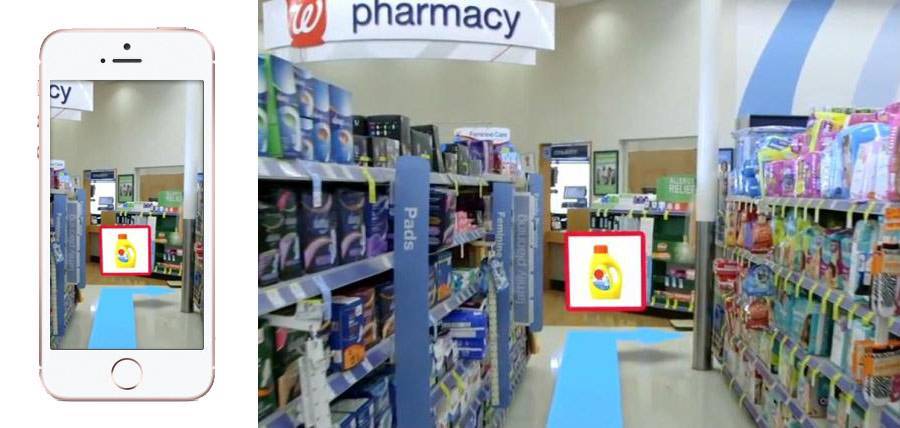

How the "Internet of Stores" is Transforming Retail
Brick-and-mortar stores are undergoing a quiet, modern renaissance. It may not be visible or physical, but it is transformative for in-store sellers and buyers.
With technology driving the change, our buildings are getting smarter.
Home-based technology has been moving into our daily lives for the past several years. Pick any appliance in your house -- your refrigerator, thermostat, TV, or garage door -- chances are that there is a new version of that product on the market that "talks" to your phone and laptop.
Technologists have coined this interconnected world of devices, the "Internet of Things (IoT)." The IoT represents a network of interconnected or centralized devices, vehicles, buildings and portable items embedded with software and sensors that enable these objects to collect and exchange data.
Product manufacturers have been quick to embrace the IoT, incorporating these features into products as quickly as they can get them on the shelves. A Cisco study estimates that the IoT will consist of nearly 50 billion objects by 2020. Imagine walking past an object in your home, on the street or in a retail store that can feed and, possibly retrieve, information to and from your smart phone or tablet. It is both fascinating and terrifying. We are now talking about a gray area well beyond online privacy.
The Next Big Step for IoT
Retail, grocery and big box stores are starting to realize how applying the Internet of Things (IoT) can help them advance the relationship of the shopper to the products and the store. We now have a new branch of IoT in retail that has already earned its own acronym, IoS also known as, the "Internet of Stores".
According to a recent Digby analysis, 78% of fast food chains, 75% of casual dining brands, 77% of big box retailers, 59% of specialty stores, and 58% of grocery stores have mobile apps designed to "speak to and work with" consumers in their stores. Office Depot currently offers a mobile point-of-sale in all stores, allowing customers to checkout anywhere within the store using a credit or debit card, and avoid waiting in line. CVS offers digital versions of their customer loyalty card that can be scanned at checkout and offers customers options of paper or digital coupons for items based upon their shopping history. Nordstrom has taken a giant step into IoS by merging it's online and in-store inventory, allowing customers to pick-up items in-store or request delivery for free.
Perhaps the most innovative IoS strategy at the moment, is being tested by Walgreens. It is being tested at four of their stores in Chicago, New York, Seattle and St. Louis. Partnering with Aisle411 and Google's Tango [defunct now], Walgreens is experimenting with a product finder that uses augmented reality and mapping navigation to help guide shoppers toward items on their shopping list.

The technology is precise enough to get the shopper within 10 cm of item location accuracy. The mobile app uses a three dimensional map of each retail location and merges that information with the user's orientation, floor plans and data showing where products are on the shelves. If eventually made available to shoppers, the final product could run on a tablet mounted to a shopping cart.
What Does it Mean for Marketers and Consumers?
In-store Insights
The Walgreens app can be used to better understand the behavior of in-store shoppers. The Internet of Stores makes it possible to collect information on where customers go in-store, how long they stay and what they purchase. Lingering in a product section and browsing signage can be interpreted data. Retailers can design floor plans that keep customers in their stores longer and, consequently, increase the opportunities to invite consumers to add items to their baskets.
Personalization
We are still a few years off going full Minority Report, but the Internet of Stores creates an opportunity for retailers to offer contexual offers based on a shopper's in-store location. Privacy concerns are a barrier to this innovation (and rightfully so), but it's entirely possible that in-store signage might some day recognize you based on your mobile-device.
Security
There are legitimate concerns from those in the IT security field that we have not thoroughly assessed the consequences of making every day devices network-enabled. It is extremely convenient to be able to access your garage door, lights and thermostat remotely, but what happens if your controls and your data falls into the wrong hands? What if someone was to access the smart door lock to your business? Or worse yet, what if someone was able to access the computer than runs your car?
The Internet of Stores is an exciting development in product innovation that is sure to change the way we interact with retailers. It's applications stretch our collective imagination and will surely force us to ask and answer some very difficult questions about the future. Whether that future ends up looking like George Orwell's 1984, or Star Trek is largely up to what society values most, convenience or privacy.




